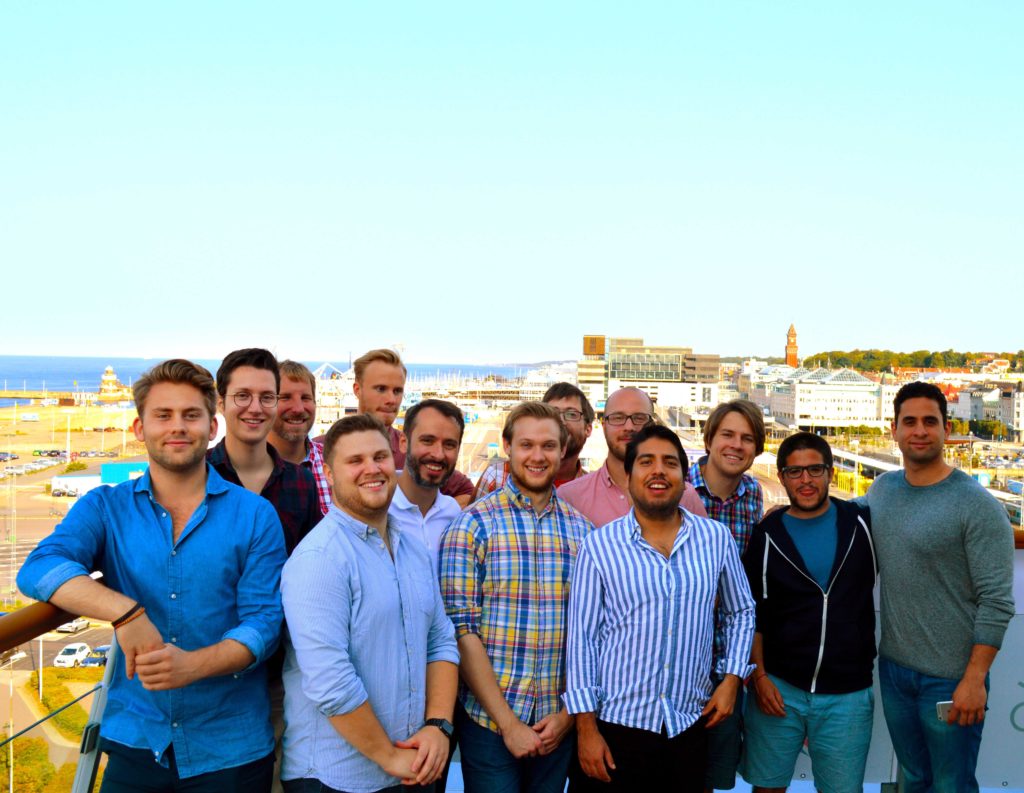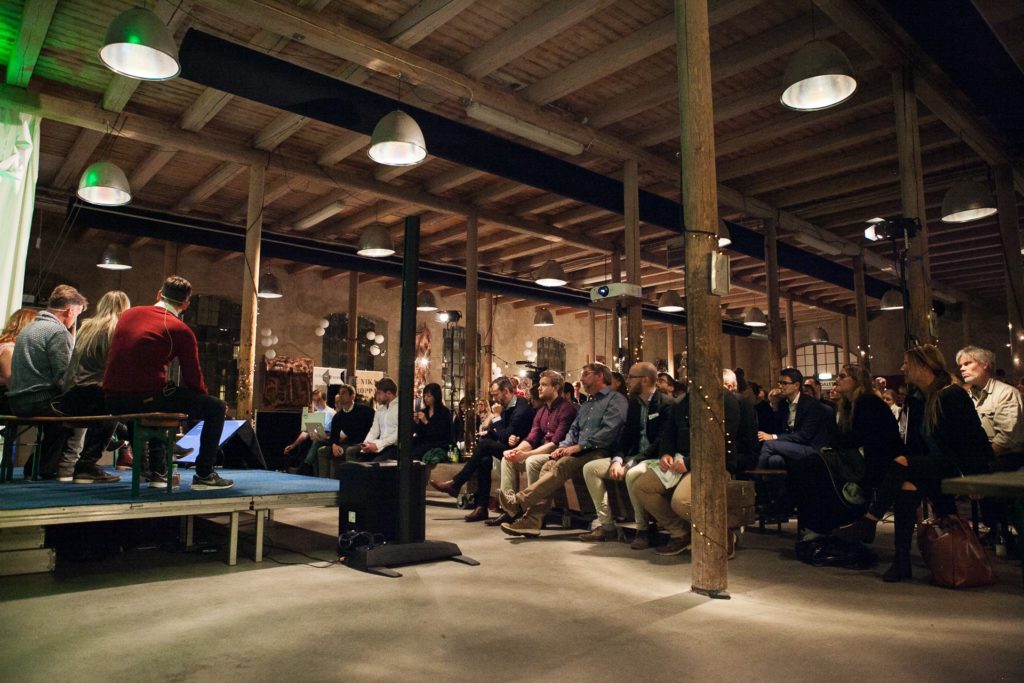Workshop Butler wasn’t started from scratch. It grew from a product that my fellow Happy Melly brands Management 3.0, Lean Change Management, and Collaboration Superpowers — all license providers — had been using for about two years to manage facilitators, licenses and events.
When Workshop Butler began, I decided to change direction and concentrate on freelance trainers even though we had three paying license providers. The trainer is the basic unit in the training marketplace: trainers form training companies and get licensed by certificate and license providers. Most functionality needed by trainers is also needed by other players on the market. If we make trainers happy, we automatically become interesting to other types of players. That was my thinking and it still is.
But the money coming from those clients blurred my thinking. I thought, “Hey, we have three paying customers. We’re good” when in reality we had zero paying customers as we were rebuilding the product for trainers. It resulted in many lost weeks: we spent a huge amount of summertime developing new features, required for license providers only; our first pricing models for trainers was identical to the one used by license providers and was too difficult; our message to clients was unclear; I thought we had a proven concept while we hadn’t.
Lesson Learned: When you’re alone or have a small team, select one type of clients and make them happy. Try to descale as much as possible. If it’s possible to divide customers from the selected type even more, divide it. If it’s not possible to divide, you’re probably not trying hard enough. For example, nowadays we concentrate only on freelance agile and IT trainers who charge participants through invoices and have their own websites.
Startup Accelerator Lesson #2: Take it one customer at a time
Alex and Johannes — the directors of THINK accelerator program — kept saying we should concentrate on one client at a time. “Start with onboarding the first customer. Then the second one”, they told me.
I was lucky to have meetings with two potential customers two weeks after the program started. We had great productive discussions and they were ready to start using Workshop Butler. And then I failed…
Our platform is much better now than it was back in September, during my meetings with our first customers. Those trainers wanted custom integrations. However, we couldn’t provide them right away as we needed to add some functionality.
I made a mistake by not prioritising the required features as much as possible. I also spent my own time on other leads, interviewing trainers and writing new proposals. As a result, we showed the first results only in two or three weeks. And it was too late. The training business is seasonal.
October, November and the first half of December is a high season. Not only did we deliver the integrations late, we also delivered them when the trainers have no time or desire to do anything expect to work with clients.
By following too many leads at once, we lost the chance to start working with those clients in the autumn.
I got the next chance in December and it happened to be a hard one. The trainer had his website hosted by WordPress.org which doesn’t allow any third-party scripts due to security reasons. To start working with us, the trainer had to move his website to a self-hosted domain. Realising it could become a huge impediment, I suggested making a move myself…
Long story short, I spent several days moving the website from WordPress.org to a self-hosted WordPress server, and that trainer became our first paying client. Check here to see how this integration works and how good his website looks!
One client is not many. Yet it was a huge step for us. He instantly pointed out some illogical moments in our solution. So…
Lesson learned: Concentrate on onboarding your first customer. You will learn from that customer more than from dozens of prospect interviews.
Startup Accelerator Lesson #3: Different pricing models for different types of clients
A general rule about pricing is “The smaller your clients, the easier pricing should be”. Though Workshop Butler is not in a business-to-consumer market, it’s not that far. Our main audience right now is very small training businesses of one to four people.
When we launched our first public version in September, we decided to use the same pricing model for trainers as we used for certificate and license providers. It was a mistake. While bigger ventures are ready to go into the nuances of pricing and we are ready to spend time to explaining it to them, it’s not the same with trainers.
You cannot reach out to and talk to each trainer personally, persuading them with the advantage of your pricing model. It should be clear for them in advance how much they will spend. We tried to overcome it by creating an online calculator. Yes, an online calculator which showed an amount of money paid for each event!
We wasted more than six weeks fixing a pricing mistake. And six weeks is a lot for a startup with a small cash flow. Then, it took us two weeks to realise it wasn’t a proper solution. It took us a month to come up with, test and implement our existing model for trainers. It’s not perfect yet it’s good enough for now.
Lesson Learned: Don’t repeat our mistake, make sure you have different pricing models tailored to your different clients.
Startup Accelerator Lesson #4: Don’t scale too early
You’ve probably heard this advice. It’s very popular in a startup community. I heard it at least 50 times and I’m sure I gave it myself at least ten times. Yet I failed to follow it.
Being a developer for more than ten years, I assumed the advice was about technology. You don’t need to build a scaling architecture before your concept is proved. You shouldn’t invest in scaling solutions when you have only ten customers and no growth. I realised I was wrong after a bank card debacle.
Before launching our first public version in September, we decided we would use invoices to charge our future customers. Trainers are used to working with invoices, so it wasn’t a big deal. The solution was good and helped us launch earlier. Even though we had no clients, I was worried about accepting payments that way because I was sure that trainers would be lining up to use our service in a couple of months. The obvious solution for SaaS is to accept bank cards. And here we got into the problem. We wanted to work with a reliable card processing provider but none was available for us: either they didn’t work with companies based in Lithuania or they didn’t like our pricing model.
For two weeks I frantically tried to find a solution, wasting a lot of time and frying a lot of nerves. This was back in October.
It’s the middle of January. We’re not accepting bank cards yet and it’s totally fine. We plan to start doing it next week, with our new release. If this plan fails, I’m not worried at all.
Lesson learned: Any decision related to your company and product should go through a scaling check. Hiring, team salary, billing, customer support, etcetera. Most scalable solutions require additional time, costs and effort you don’t have in the beginning. Think twice if you need a solution that scales right now.
Startup Accelerator Lesson #5: Believe in yourself
I have a love-hate relationship with Jurgen Appelo’s celebration grid. I like it because it explicitly defines the connection between experiments and learning. I don’t like it because it implicitly assumes that a number of failed experiments equals to a number of successful experiments.
You should be prepared that your experiments fail many more times than they succeed. And that’s normal. Scientists run hundreds of failed experiments before they get a successful one. Toddlers fall many times before they take their first step. Investors put money in several companies at once expecting only one of them makes a good return on investment.
It is also hard. Not only should you stay positive about failures, you should keep enough energy to help your team go through it. I cannot say I mastered this skill yet I made a big progress.
Lesson learned: When you feel you don’t believe in yourself anymore, drop everything and find an activity that distracts your brain for a while. Go and meet friends or family. Open a book or do some physical training. And remember: experiments fail, not you.
In case you’re adventurous enough and ready to spend three months in terrific Helsingborg, Sweden, I suggest you apply to join the next batch in THINK accelerator. Three months of fun and hard work worth spending!
This article wouldn’t appear without a generous help and support from THINK directors, Alexander Bastien and Johannes Ivarsson, and our mentor Annette Melander Berg. Thank you very much, folks!



